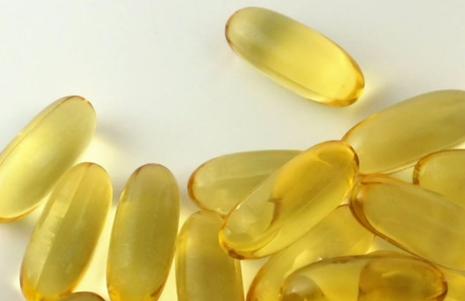Imports and exports of pharmaceuticals in 2013 will increase by 12% year-on-year
In 2012, the good fundamentals formed by China's pharmaceutical foreign trade continued to be maintained. The growth rate of foreign trade was higher than the overall level of foreign trade in the country, but the growth rate was significantly reduced. In 2012, the total value of China's pharmaceutical product imports and exports reached US$80.95 billion, an increase of 10.5%, and reached a record high. Among them, exports were US$47.60 billion, up 6.9% year-on-year; imports were US$33.35 billion, up 15.9% year-on-year. The foreign trade surplus was US$ 14.25 billion, a decrease of 9.5% year-on-year. Xu Ming summarized the main characteristics of China's pharmaceutical foreign trade situation in 2012 as "four changes" and "four changes." "Four constants" are: First, the main structure of export products remains unchanged. The export volume of western medicine and medical device products still occupies the mainstream of my pharmaceutical export commodities; second, the pattern of “three pillars†in the traditional market remains unchanged. The European Union, the United States, Japan, and the ROK are still the major markets for the import and export of pharmaceutical products in China; the third is the momentum of a more balanced pharmaceutical trade. In 2012, China’s imports of pharmaceutical products amounted to US$33.35 billion, an increase of 15.9% year-on-year, with a foreign trade surplus of US$14.25 billion, a decrease of 9.5% year-on-year. Fourth, the process of accelerating international registration and certification of enterprises remained unchanged. In 2012, Chinese pharmaceutical companies submitted 201 DMF applications to the US Food and Drug Administration (FDA), an increase of 33.1% compared to the same period of 2011, the total number of applications reached 1259, and 173 applications for CEP were submitted to the EDQM. , compared with the same period in 2011, it increased by 34.1% and the total number of valid certificates was 393. The "four changes" are: First, the status of superior products changes. China's traditional strong export of bulk APIs was generally unsatisfactory in 2012. According to statistics, the top 25 western medicine raw materials exports in export volume totaled 4.12 billion U.S. dollars, a decrease of 18.9% from the year-ago period in 2011. The second is the change in the contribution of the location subject. In 2012, China’s pharmaceutical provinces experienced slower exports, and pharmaceutical exports from Jiangsu, Shandong, and Guangdong increased by 4.7%, -0.2%, and 2.5%, respectively, which was lower than the national average. The third is the change in the momentum of preparations exports. For a long time, Western medicine has not been the main export product. In 2012, Western medicines exports grew at a rapid rate, with an increase of 17.9% in export value, showing strong development momentum. The fourth is the change in the pattern of companies entering the international market. In 2012, the emergence of a series of mergers and acquisitions confirmed that Chinese pharmaceutical companies are gradually entering the international market with strong players. Looking forward to the situation of China's pharmaceutical foreign trade in 2013, Xu Ming said that in 2013 China's international trade environment is expected to be better than 2012, but overall it will remain in the “very cold areaâ€. Due to the uncertainties in the economic recovery in Europe and the United States, the tightening of the international regulatory environment, and the persistence of pressure on the appreciation of the renminbi, the development space for China's pharmaceutical foreign trade is greatly limited. With the deepening of transformation and upgrading of pharmaceutical foreign trade companies, the continuous expansion of domestic medical reform to stimulate import growth, and the rigid demand for the pharmaceutical industry, etc., China's pharmaceutical import and export growth rate in 2013 is expected to reach about 12%, the fundamentals are still good. At the press conference, Xu Ming also introduced the “Generic Pharmaceutical Patent Challenge Report†project conducted by the Medical Insurance Chamber of Commerce and the Chinese pharmaceutical trade operation and international pharmaceutical market monitoring platform; Cai Tianzhi, Director of the Business Coordination Department of the Chamber of Commerce issued the 2012 to 2013 Chinese Medical The annual import and export price index of the equipment, and the introduction of business activities such as the “China Medical Device Trade Yearbook†compiled by the Chamber of Commerce and the International Medical Dressing Conference. Leading Laser Measure Module Factory in China
Product Specifications:
Accuracy
±1
mm (0.04 inch)
Measuring
Unit
meter/inch/feet
Measuring
Range (without Reflection)
0.03-150m
Measuring
Time
0.1~3
seconds
Laser
Class
Class
II
Laser
Type
635nm,
<1mW
Size
45*25*12mm
(±1 mm)
Weight
About
10g
Voltage
DC2.0~3.3V
Electrical
Level
TTL/CMOS
Frequency
10Hz
Operating
Temperature
0-40 ℃ (32-104 ℉ )
Storage
Temperature
-25~60 ℃ (-13~140 ℉)
Range Sensor,Laser Distance Module,Distance Sensor,Laser Measure Sensor Chengdu JRT Meter Technology Co., Ltd , https://www.irdistancesensor.com
The World's First single transmitting single receiving design laser module, which has a big help to reduce producing cost and power consumption of the laser distance sensor.
This Laser distance sensor has high Accuracy up to ±1 mm, working as phase measure, which support RS232/RS422/RS485/Arduino to TTL communication.
This laser distance module is widely used in the Laser Distance Meter industry, also a very good choice for the Industrial applications. Most of measuring tools manufactures is purchasing from us in China.